Orchid Leaves Turning Yellow: Causes + How to Save the Plant
Orchid leaves are not immune to yellowing. If you know what causes the condition, it would be easy to save your plant. There are about 280000 species of orchids occurring worldwide. Although you’ll find the plants in every US state and Canada, orchids are essentially native to the tropics of Australia and Asia. With proper care, you can cultivate them anywhere.
Overwatering and slow draining soils are the major causes of yellowing in orchid leaves because they cause root rot. To save the plant, use a potting mix of one part perlite, fine charcoal, and four parts of fine-grade bark. Provide bright indirect light from a southern-facing window to prevent yellowing.
Avoid removing the yellow orchid leaves. Let them drop off naturally to avoid injuring the plant. With proper care, new deep green leaves will soon emerge. Depending on the variety you grow, your orchid can rebloom every three to twelve months.
Why are orchid leaves turning yellow?
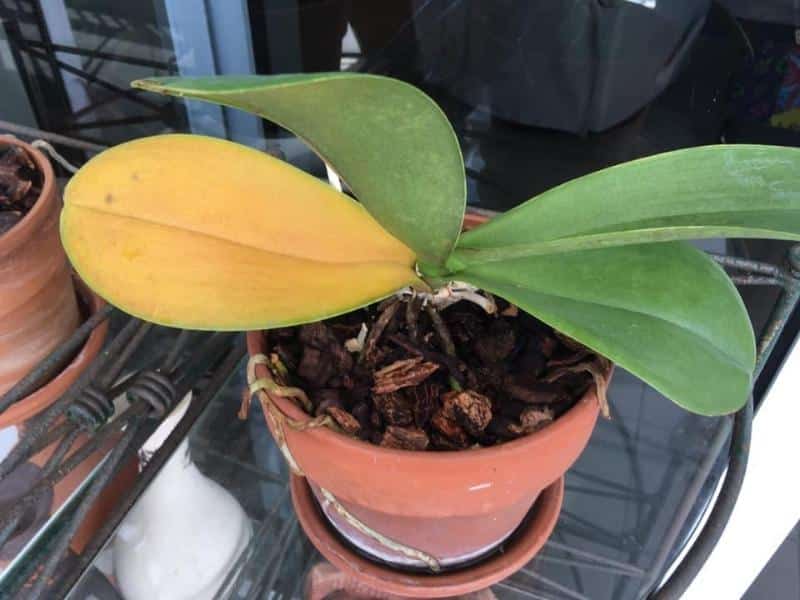
Orchid leaves turn yellow when sitting in soggy soil or when suffering from root rot. Also, exposing the plant to direct sunlight or extreme temperatures can lead to leaf discoloration.
Here are ten reasons why your orchid leaves may be turning yellow:
Overwatering
Most orchids are epiphytic and lithophytic. The plants thrive on tree trunks, roots, rock crevices, and surfaces. It means orchid roots are usually relatively dry. In the tropics, the rain is unpredictable but enough to promote healthy orchids. Overwatering your orchids can cause yellow leaves in a matter of hours or days.
Overwatering cuts off the oxygen supply that the orchid’s roots depend on, which can cause irreversible root rot. The lack of oxygen may also cause stunted growth in your orchids. Once there is nowhere to store the excess water, your orchid roots will drown, and the plant’s leaves will turn yellow.
Underwatering
Underwatering also causes damage to the orchid’s root system. Unlike overwatering, which causes root rot, underwatering dehydrates the plant. Dehydrated orchids turn yellow and wilt from the older lower leaves.
If your orchid is underwatered, its growth will be slow, its leaf edges will turn brown or yellow, and the buds may fall off before they open.
Generally, not meeting the water needs of your orchids subjects them to a drought-like condition. Remember that orchids are not woody plants. Therefore, water is essential for maintaining the turgor pressure of their cells, leaves, stems, and roots. Underwatering the plant makes it weak, and your orchids may even fail to flower in their season.
Slow draining soils
Although orchids need water, the potting soil mix should be fast draining – but not too fast. A potting mix composed mainly of clay can be so dense with little-to-no space for water to flow through.
Pro tip: To test if your orchid’s potting soil is well-draining, dig a hole 12 inches deep and fill it with water. A well-draining should ‘drink’ the water in less than an hour.
If you can still notice the water in the hole after one or two hours, your orchid’s potting mix is poorly draining. Slow-draining soils suffocate the roots of your houseplant. Since the plant’s roots cannot breathe, physiological processes, including water and nutrient delivery to the leaves, are shut down. As a result, the leaves will turn yellow and the plant may die if you don’t save it soon enough.
Overexposure to direct sun
Too much direct sun is one of the causes of yellowing orchid leaves because it begins to burn the leaves. Before your orchid leaves turn yellow due to excess sunlight, they will first become pale green. If you shelter the plant from direct sunlight during this time, it will quickly regain chlorophyll and lush green leaves.
According to the American Orchid Society, too much direct sun will turn your orchid anemic. In other words, the chlorophyll deterioration in the orchids is equivalent to blood deficiency in animals. The orchids do not only turn yellow-green but would also lose their leaves prematurely. If the sun is too hot, the leaves of your orchid will wrinkle and wilt.
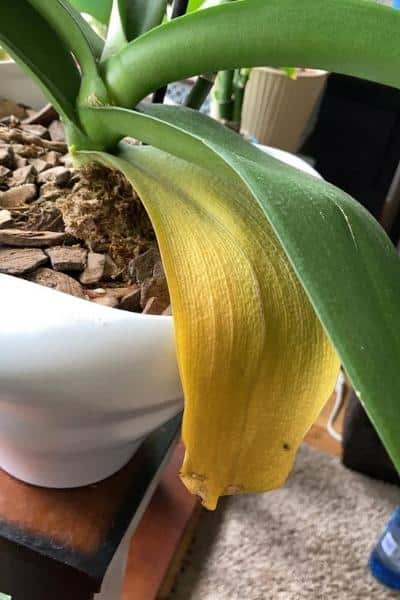
You can save the orchid by providing just the right amount of sunlight.
Excess fertilizer
Overfertilizing could be severe if you apply fertilizer on wet orchid foliage. Fertilizers contain salts that can interfere with the plant’s osmotic potential. Since the osmotic pressure is more significant outside the orchid’s roots than inside the plant, water flow is reversed. Instead of absorbing water, your orchid loses water into the surrounding soil and ends up drooping and losing its color.
Whereas excess sunlight burns the leaves, excess fertilizer significantly impacts the plant’s roots by killing the small hairs on them. The effects are root damage and brown or yellow leaf discoloration.
Pro tip: You will know that your orchid leaves are turning yellow from excess fertilizer when the yellowing occurs one or two days after a fertilizer application.
Cold temperatures
Orchids are particularly more susceptible to frost. Enzymes are essential for the orchid’s biochemical reactions, nutrient recycling, and soil stabilization. Colder temperatures reduce the plant’s enzyme activity significantly. Your orchids may find it difficult to absorb nutrients from the soil and become stunted.
Winter and cold drafts will often cause brown and yellow orchid leaves because the plant stops making chlorophyll. Instead of making chlorophyll, the plant breaks down the available green pigment, giving way to other colors.
Start by moving your outdoor orchids indoors and positioning them away from cold drafts to stop the yellowing foliage.
Humidity levels
If the air surrounding your orchids is low in humidity, the plant loses moisture more quickly. If the plant gets less water from the soil than it loses into the atmosphere, you will start noticing yellow orchid leaves. The yellowing starts from the leaf edges, which might become dry and crispy.
When the humidity levels are low, most people overwater their orchids to save the plant. It is easier to believe that evaporation from the soil will keep the leaves moist. But it only compounds the problem. There are several ways to keep the correct humidity for your orchids. Continue reading to find out how to save your orchids from low humidity.
Repotting stress
Another commonly overlooked cause of yellowing orchid leaves is repotting stress. Although repotting your orchids once a year is recommended for new growth and striking blooms, few people get it right the first time. Repotting orchids might shock the plant and cause drooping, wilting, and yellowing of leaves.
However, repotting stress should not stop you from giving your orchids a new home. If the plant grows bigger than the pot or the roots emerge through the drainage holes, repotting your orchids would help save them.
Repot your orchids in the spring. Gently loosen and unbind the roots then transfer the plant into a new potting mix and water thoroughly.
Pro tip: If your orchid turns yellow after repotting, chances are it is just repotting shock. It’ll likely revive within a few days with proper plant care.
Old leaves turn yellow
Older orchid plants and leaves will turn yellow before they fall off. This is a natural process that you may have no control over. Although pruning yellow leaves is a common practice for most houseplants, orchid experts recommend not to trim off your orchids.
Old discolored leaves can be unsightly but let them fall from the stem on their own. Pruning the leaves increases the plant’s risk of bacterial and fungal infections, which may also cause spots and yellowing of orchid leaves. In case of a disease, it is advisable to remove the affected parts to save the plant.
Can you save an orchid with yellow leaves?
You can save an orchid with yellow leaves, provided the prevailing conditions do not destroy the plant’s enzymatic reactions. However, damaged leaves may not become green again. What happens is that newly emerging foliage will be free from damage and infections.
If your orchids die from frostbite, they may be difficult to revive. You should constantly monitor your the houseplant for any unusual signs and symptoms. You can save your orchid if you notice yellowing or crispy leaves early enough.
Let’s look at some ways to fix yellowing leaves in orchids.
How to Fix Yellowing Leaves in Orchids
The proper treatment will depend on the reason behind the leaf discoloration.In most cases, poor care practices are the reason why your orchid is turning yellow. You want to check whether you are watering the plant properly and whether it is receiving proper light.
Here is how to fix yellowing leaves in orchids:
1. Water your orchids once every 1-2 weeks
Orchid roots can rot very quickly if you keep them too moist. Water the potted plant thoroughly in a kitchen sink once a week in winter or twice a week in warm and dry weather. Do this for about 15 seconds and let the orchid drain for 15 minutes before putting it back.
2. Use a potting mix of peat moss, perlite, and fir bark
Several potting mixes would promote good drainage for your orchids. Peat moss, perlite, and fir bark are the best. However, if you can mix coco coir, rock wool, dried fern roots, and cork nuggets, your orchids will not be yellow due to poor drainage.
3. Provide orchids with bright, indirect sunlight
East or west-facing windows are ideal for orchids. They ensure your plant gets bright, indirect sunlight every day. That will give you a happy orchid with bright green leaves. Although orchids require 12 to 16 hours of sunlight, protect the plant from the direct midday sun.
4. Apply a standard 20-20-20 water-soluble fertilizer once a month
The fertilizer should be slow-releasing. There are special fertilizers for orchids like Miracle-Gro Ready-To-Use Orchid Plant Food Mist. Spray your orchid leaves, roots, and flowers to supply them with Nitrogen, Phosphorus, and Potassium. Fertilize once every month.
5. Maintain temperatures between 65 °F and 75 °F
You should consider the nighttime and daytime temperatures for your orchids. Orchids thrive in cool and warm temperatures. During the day, ensure the temperature does not deviate more from 75 °F and 65 °F at night. Colder temperatures below these may discolor the leaves and discourage blooming.
6. Provide a humidity of 40% to 70% for your orchids
The American Orchid Society recommends a humidity of 40% to 70% for your orchids. The vanilla orchid thrives in this range. According to the Society, even the orchid species that like desert conditions, such as Zelenkoa onusta, will thrive when humidity is between 40% and 70%.
Should you cut off yellow orchid leaves?
There are times when cutting off yellow orchid leaves is allowed. You should cut them off only if fungi and bacteria infest the leaves. When pruning, use a sterilized pair of scissors. Otherwise, you should not cut the yellow orchid leaves.
If you cut off the yellow orchid leaves in a healthy plant, like those that are yellow due to old age, you are not saving the plant. Although it might look good to the eye, cutting off the leaves will only promote diseases to your orchids.
References
- American Orchid Society. (2022). Heat Stress.
- Hammer, M. (2000). Osmosis and Plant Nutrition. American Rhododendron Society


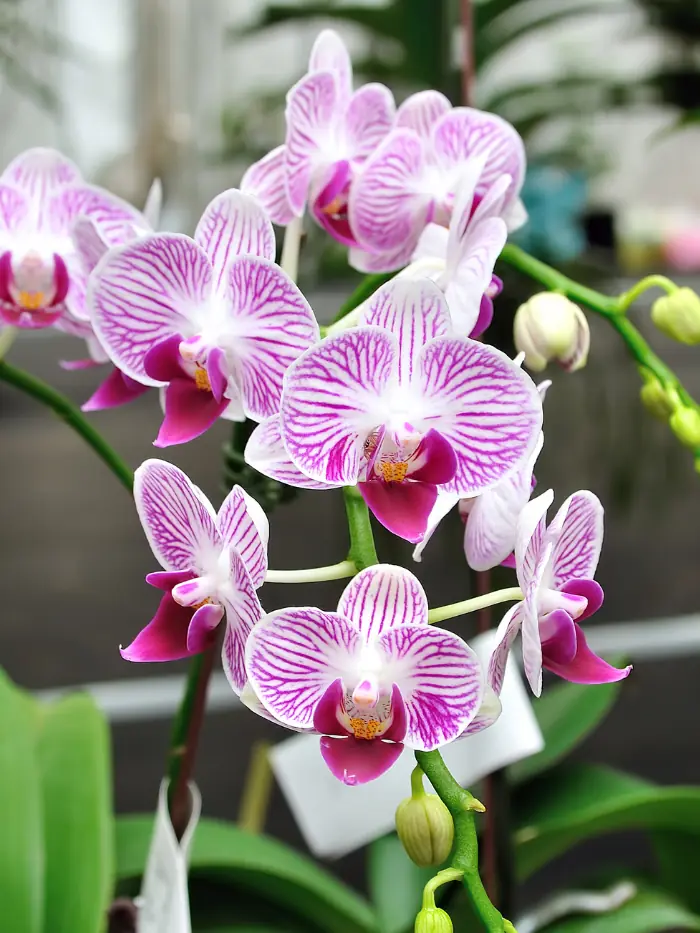
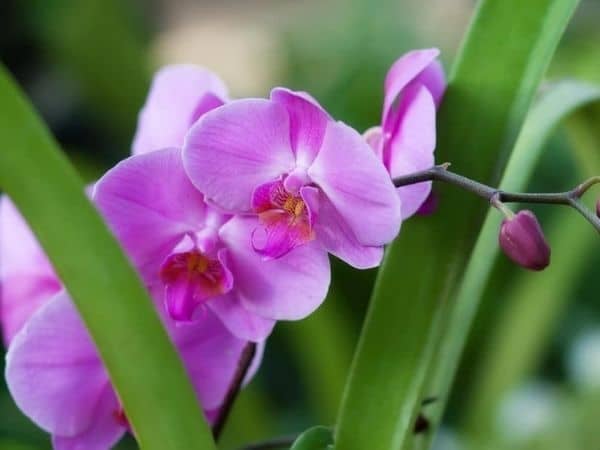
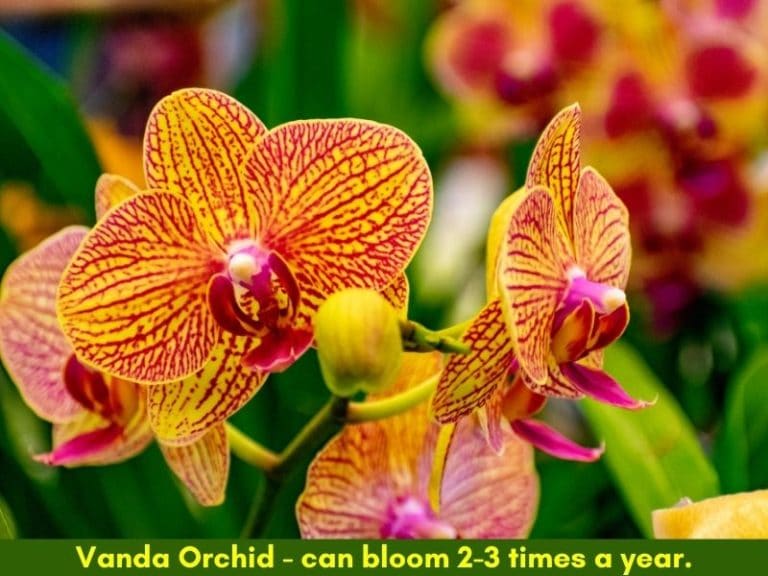

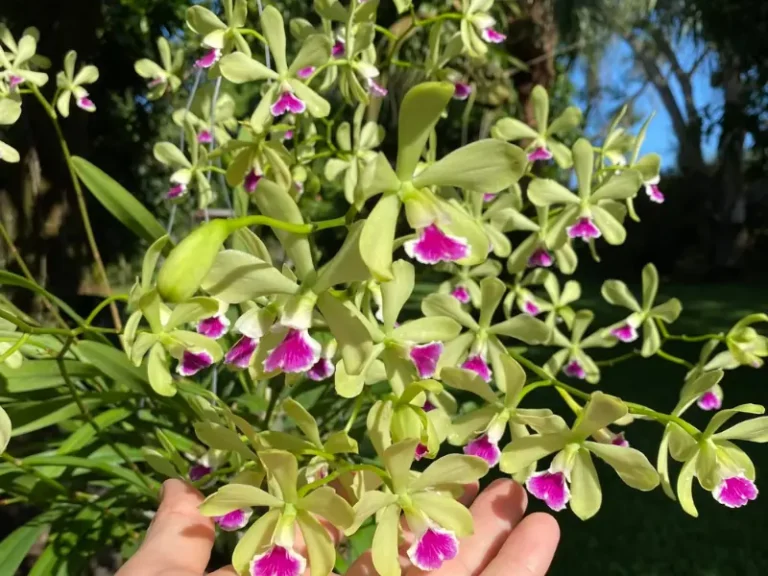

I am worrièd about my orchid that lost its leaves overnight. It was fine last night but now has only one drooping flower on it.I have watered it with ice like the instructions said and not that very often..it is in a southern window and I should not have put it there. It does have roots that are above the surface of the soil. Please help me. My daughter gave it to me and I want to save it. And what is a “node”?